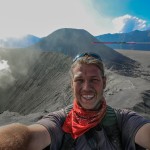
Nathan Chapman
Geologist and PhD student
Centre for Excellence in Ore Deposits
University of Tasmania
Since starting my PhD studies at the University of Tasmania, I’ve had the great pleasure of being able to study the isotopes of lead (Pb) at the world’s single largest source of uranium – Olympic Dam in South Australia – by SHOOTING LASERS AT ROCKS!
Since most uranium eventually radioactively decays to lead, I can study this element to find out loads of awesome stuff like:
– How old is it? (Nearly 1.6 BILLION YEARS OLD!)
– How has it been changed through time?
– Where did it come from?
– What was our planet like at this time?
See, the thing about metal-mines is, THEY ALL HAVE A STORY! It’s no accident that such whopping-great lumps of metal happen, they’ve all been formed by some amazing process on Earth and sometimes SPACE!
Here are a few of the coolest one I know:
– Oklo Mine, Gabon, Africa, formed from a natural nuclear bomb 1.7 billion years ago under the ground;
– Sudbury Mine, Ontario, Canada, formed when a 15km-wide meteorite smashed the Earth 1.8 billion years ago, creating heaps of lava and eventually loads of shiny rocks;
– Rosebery Mine, Tasmania, formed when underwater volcanoes bubbled metal-rich fluid onto the seafloor, 600 million years ago!
I love my rocks, I love having adventures and I love being able to help understand how the Earth works.
Geology is such a great science because you can go where ever you want an piece together the stories of what happened right under your feet, millions of years ago!
Find out more: www.utas.edu.au/codes